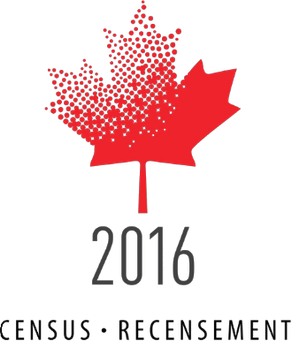
2016 Canadian census
The 2016 Canadian census was an enumeration of Canadian residents, which counted a population of 35,151,728, a 5% change from its 2011 population of 33,476,688. The census, conducted by Statistics Canada, was Canada's seventh quinquennial census.[N 1] The official census day was May 10, 2016. Census web access codes began arriving in the mail on May 2, 2016.[2] The 2016 census marked the reinstatement of the mandatory long-form census, which had been dropped in favour of the voluntary National Household Survey for the 2011 census.[3] With a response rate of 98.4%, this census is said to be the best one ever recorded since the 1666 census of New France.[4][5] This census was succeeded by Canada's 2021 census.
Planning[edit]
Consultation with census data users, clients, stakeholders and other interested parties closed in November 2012. Qualitative content testing, which involved soliciting feedback regarding the questionnaire and tests responses to its questions, was scheduled for the fall of 2013, with more extensive testing occurring in May 2014. Statistics Canada was scheduled to submit its census content recommendations for review by the Parliament of Canada in December 2014 for subsequent final approval by the Cabinet of Canada.[6]
On November 5, 2015, during the first Liberal caucus meeting after forming a majority government, the party announced that it would reinstate the mandatory[7] long-form census,[8] starting in 2016. By early January 2016, Statistics Canada had announced a need for 35,000 people to complete this survey to commence in May.[9]
Enumeration[edit]
Portions of Canada's three territories and remote areas within Alberta, Labrador, Manitoba, Quebec and Saskatchewan were subject to early enumeration between February 1, 2016, and March 31, 2016.[11] Enumeration of the balance of Canada began on May 2, 2016, with the unveiling of the online census questionnaire,[12] eight days prior to the official census day of May 10, 2016.[13] Because of a wildfire in early May in northeast Alberta, Statistics Canada suspended enumeration efforts in the Fort McMurray area with alternate means to collect data from its evacuated residents to be determined at a later date.[14] Shortly after re-entry, residents were encouraged to complete their census form online or over the phone; however door-to-door enumeration remained suspended.[15]
Public response[edit]
Non-binary activists expressed concern that the choice between "male" and "female" on the "sex" question left them with no valid options.[16] In response, Statistics Canada stated that "Respondents who cannot select one category ... can leave the question blank and indicate, in the Comments section at the end of the questionnaire, the reason(s) for which they've chosen to leave this question unanswered."[17] Statistics Canada stated that they intend to analyze these comments but that because of the technical difficulties of analyzing free-form text, this analysis will not be released on the same schedule as the binary gender data.[17]